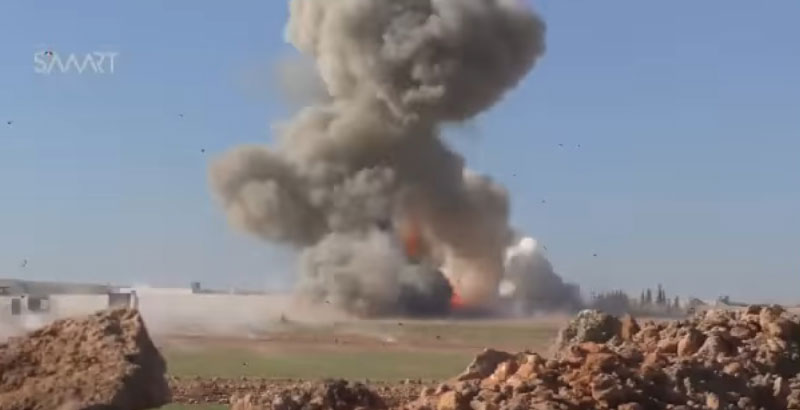
The Turkish Army, conducting Operation EUPHRATES SHIELD in northern Syria since 24 August 2016, has reportedly lost at least 15 German-made, Leopard 2A4 main battle tanks (MBTs) to man-portable anti-tank systems (MANPATs) in combat with Daesh fighters. Five were lost in December 2016 after the Turks deployed several of its 354 Leopard 2A4’s to buttress its offensive, which initially employed mainly older, upgraded American-made M60A3 MBTs. 10 more Leopard 2’s were knocked out in subsequent fighting in urban terrain around the town of al-Bab in northern Syria, 15 miles south of the Turkish-Syrian border.
Daesh fighters have used a variety of anti-tank missiles against the Turkish Army vehicles, including U.S.-made BGM 71 TOW-2s, and Soviet/Russian-produced 9K111 Fagots (“Basoon”) and 9M133 Kornets, all reportedly captured from Syrian and Iraqi Army stocks. The 60-ton Leopard 2, a mainstay of NATO armored forces, earned a reputation for invulnerability after surviving Taliban improvised explosive device (IED) attacks in Afghanistan. However, the A3 version used by the Turks does not have explosive reactive armor or active protection systems, which are used by the many modern MBTs to defeat the new generation of MANPATs.
There is also some evidence that Turkish tank losses are at least partly due to faulty tactical employment. Some of the M60s destroyed in the initial fighting were observed firing from open positions when hit, rather then from less vulnerable hull down locations. The Leopard 2A3’s, with heavy frontal armor, but thinner protection on the sides and rear, were designed for long-range tank v. tank fighting, and are notably unsuited for combat in urban terrain. Successful urban combat places a premium on combined arms tactics, particularly the use of dismounted infantry to clear out potential enemy MANPAT flanking fire positions.
